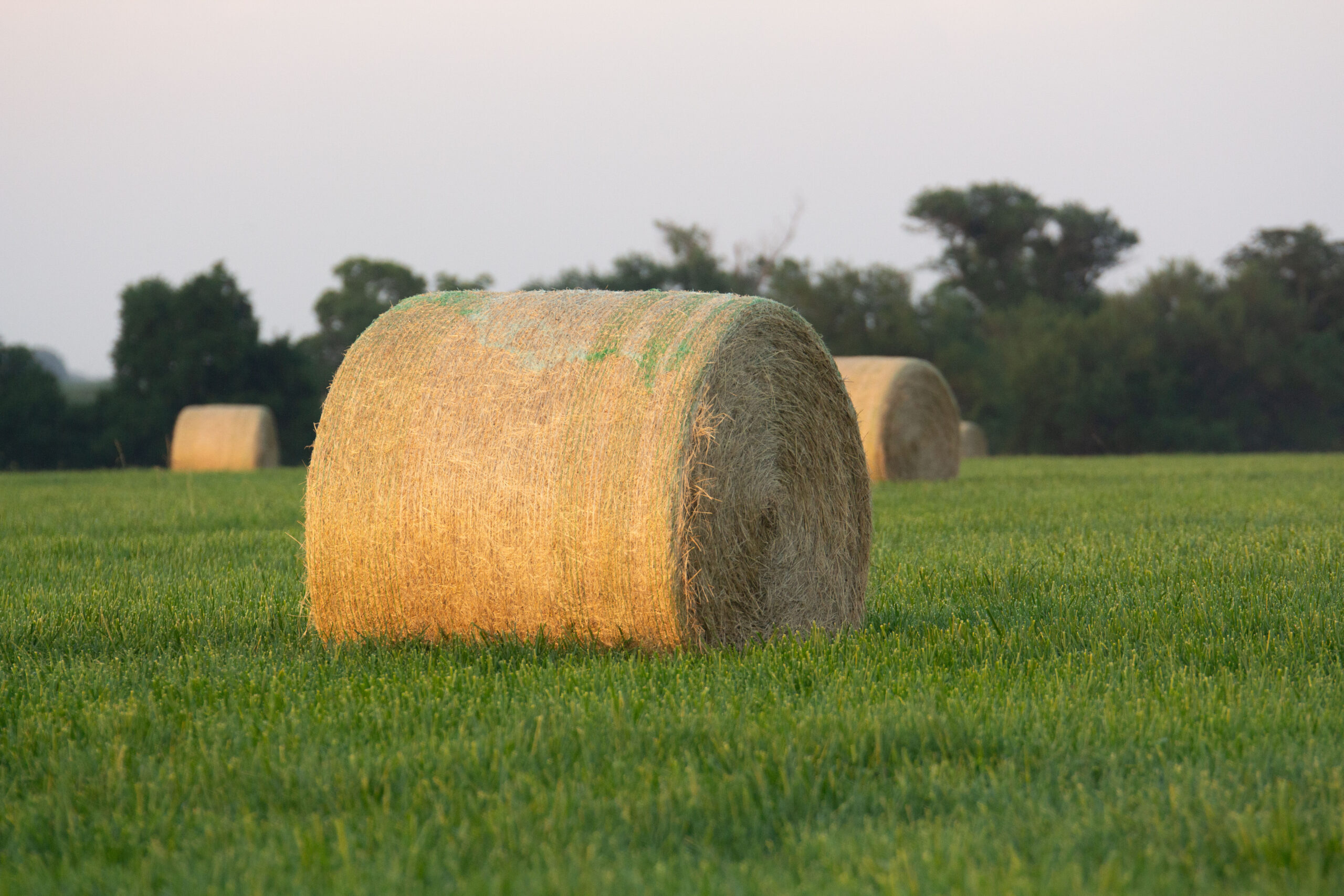
There is a lot of time, money and sweat equity put into raising good quality hay. While it may seem simple enough – pray for rain and then some sun, cut and bale at the right time and all is well… if only.
There are many details and decisions that go into growing your own forage, from choosing the right grass and making sure it’s fertilized well, to guessing the weather when it comes time to harvest. Then, it has to be high enough quality to provide for your herd’s nutritional needs.
So many details, so many differentials in outcomes. Mastering the art of growing high-quality hay is one of those farming activities that requires some experience—whether learned or earned.
One key component of high-quality hay is the amount of leaf foliage present in the bale. Up to two-thirds of the protein content in hay is found in the leaves. So, the leafier the hay, the higher the nutritional value.
Knowing this, taking extra steps to keep the leaves attached to the stalk at the time of harvest is crucial. Leaf shatter happens when the leaves break off the stem or are too dry and studies show improper harvesting and baling can cause up to a 25% loss in leaf matter. There may already be around 30-40% leaf loss prior to harvest. That’s why leaf shatter matters!
Get the maximum from the minimum.
Handling the hay as little as possible will help ensure you get the maximum leaf stay. Every time hay is moved, there is potential for leaf loss and shattering.
If you are mowing alfalfa or legumes, consider using a roller conditioner to help with leaf loss. These species have a higher risk of leaf shatter than grasses do. A flair or impeller for harvesting alfalfa increases the risk of leaf loss during cutting as they tend to strip the leaves off the stem.
After cutting, tedding the forage may be tempting to draw out excess moisture, but only do it if it’s necessary. If possible, mow in a wide swath and rake only once, then don’t touch it again until it’s time to bale.
Work the night shift.
No one said farming was going to be a 9 to 5 job, and that holds true when it comes to cutting and baling hay. The best time to be in the field is when the evening dew has started to settle in. Dampness makes the grass a bit tougher and keeps the leaves attached. And while it sounds counterintuitive to mow hay when grass is wet, the moisture levels during cutting and baling will have a direct impact on leaf loss.
This is where it gets tricky. Because too much moisture in a bale can cause mildew and spoilage, but too little can cause leaf shatter every time a bale is moved. Thus, raking into a windrow at 50% moisture is optimal for minimizing leaf loss
Producing the right product.
If you are noticing 45% or more leaf loss prior to harvest, you may want to consider an alternate variety of grass or legume for your next growing season. Experts say an ideal alfalfa should still have around 50% of its leaves when harvested.
If your hay is falling outside of these percentages, the experts at Missouri Southern Seed can help you select the right product for the next planting and ensure your herds’ nutritional needs are being met!
